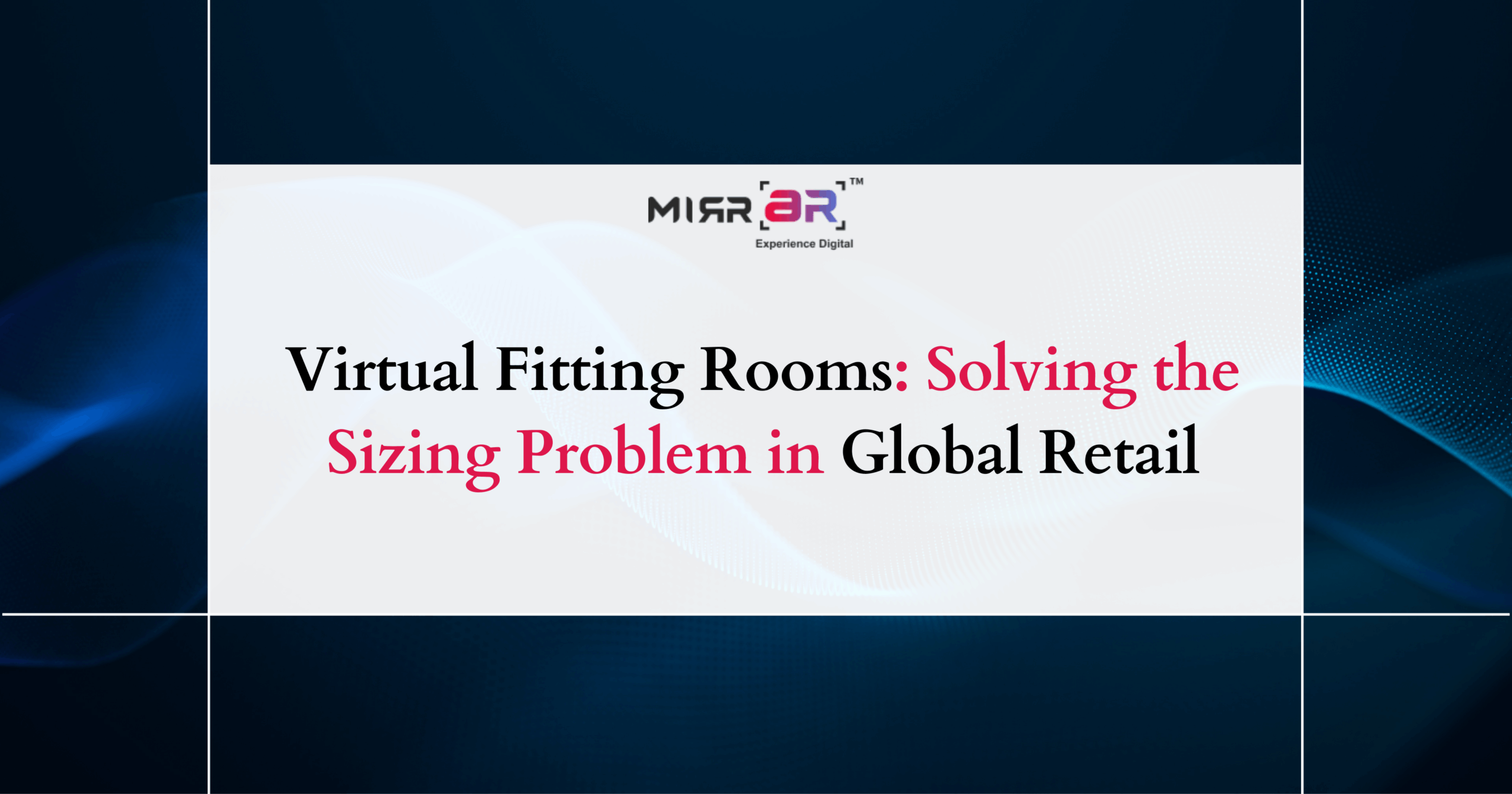
One of the most persistent challenges in global retail—especially in the fashion and apparel industry—is sizing. Walk into any store, and you’ll notice that a “medium” in one brand fits completely differently from a “medium” in another. Add cultural differences, regional sizing standards, and the rise of online shopping into the mix, and the problem becomes even more complex. Shoppers often hesitate to buy apparel online because they simply don’t know how it will fit. Retailers, on the other hand, face high return rates and dissatisfied customers.
Enter Virtual Fitting Rooms (VFRs)—a groundbreaking solution that is transforming how consumers experience online shopping. By blending cutting-edge technology with human psychology, VFRs are helping global retailers solve the sizing dilemma while delivering convenience, confidence, and personalization to customers.
The Global Sizing Challenge
Unlike electronics or books, apparel doesn’t have universal measurements. A size “8” in the U.S. may differ drastically from a size “8” in the U.K. or Asia. Even within a single country, brands interpret sizes differently. For consumers shopping across borders—now a common trend thanks to e-commerce—this lack of standardization creates confusion.
The result? Shoppers often order multiple sizes of the same item to see which fits, only to return the extras. In fact, industry data suggests that over 30% of online clothing purchases are returned, with sizing issues being the number one reason. For retailers, this means billions lost annually in logistics, processing, and wasted inventory.
How Virtual Fitting Rooms Work
Virtual fitting rooms use technologies such as augmented reality (AR), artificial intelligence (AI), and 3D body scanning to help customers visualize how garments will fit before they buy. Instead of relying on static size charts, shoppers can input body measurements, scan themselves using a smartphone camera, or even create lifelike avatars that mirror their exact shape.
The system then maps garments onto the digital body, showing how the clothing would drape, stretch, and fit in real life. This simulation goes beyond just appearance—it factors in fabric properties, movement, and proportions, creating a realistic fitting experience without the need to visit a physical store.
Building Consumer Confidence
For shoppers, the ability to “try on” clothing virtually reduces uncertainty and boosts confidence. Rather than guessing between a small or medium, they can see which size is best suited to their body. This sense of control empowers customers to make smarter purchase decisions.
Confidence directly impacts behavior. When shoppers feel assured that what they buy will fit, they’re less likely to hesitate or abandon their carts. This psychological trust turns browsing into buying, benefiting both the customer and the retailer.
Reducing Returns and Improving Sustainability
Returns are not just costly; they’re also damaging to the environment. The process of shipping items back, repackaging, and often discarding unsellable goods adds up to a significant carbon footprint. Virtual fitting rooms offer a practical solution.
By helping customers select the right size the first time, VFRs significantly reduce return rates. This translates into cost savings for retailers and a greener supply chain for the planet. In an era where sustainability is a growing priority, this advantage makes virtual fitting rooms a win-win solution.
Personalization and Customer Engagement
Beyond sizing, virtual fitting rooms add an element of personalization that enhances the overall shopping experience. Consumers can mix and match outfits, experiment with colors, and see how different styles work together on their digital avatars.
This interactivity turns shopping into an engaging journey rather than a transactional activity. It also deepens brand loyalty. When customers feel understood and catered to, they’re more likely to return to the same retailer for future purchases. Retailers can even use the data from fitting sessions to recommend products aligned with each customer’s style and fit preferences.
Breaking Barriers in Global Retail
For global retailers, VFRs help overcome one of the toughest barriers to cross-border e-commerce: sizing differences. By offering technology that adapts to each customer’s body, brands can transcend regional sizing standards. A shopper in Tokyo and one in New York can both enjoy the same product without worrying about mismatched size labels.
This global inclusivity also opens doors for smaller brands to reach international markets. With virtual fitting rooms leveling the playing field, retailers of all sizes can confidently sell to customers worldwide.
The Future of Virtual Fitting Rooms
As technology continues to advance, virtual fitting rooms will only get smarter and more realistic. AI will refine recommendations by learning from past purchases and customer behavior. AR will become more immersive, enabling real-time try-ons with greater accuracy. Integration with the metaverse could even allow group shopping experiences, where friends try on outfits together virtually before making purchases.
Retailers are already beginning to adopt hybrid models, combining physical and virtual fitting options. Imagine visiting a physical store, scanning your body once, and then having a digital twin ready for all future online shopping. The future of retail lies in this seamless blending of physical and digital experiences.
Conclusion
The sizing problem has long been one of the biggest pain points in fashion retail, especially in the age of global e-commerce. Virtual fitting rooms are addressing this issue head-on by giving consumers the ability to try before they buy—digitally. By reducing uncertainty, lowering return rates, and enhancing personalization, VFRs are transforming not only how people shop but also how they connect with brands.
For retailers, the message is clear: solving the sizing problem is no longer optional. In an increasingly competitive and globalized market, adopting virtual fitting room technology isn’t just about convenience—it’s about survival. And for customers, it means shopping with confidence, sustainability, and joy, no matter where in the world they are.
